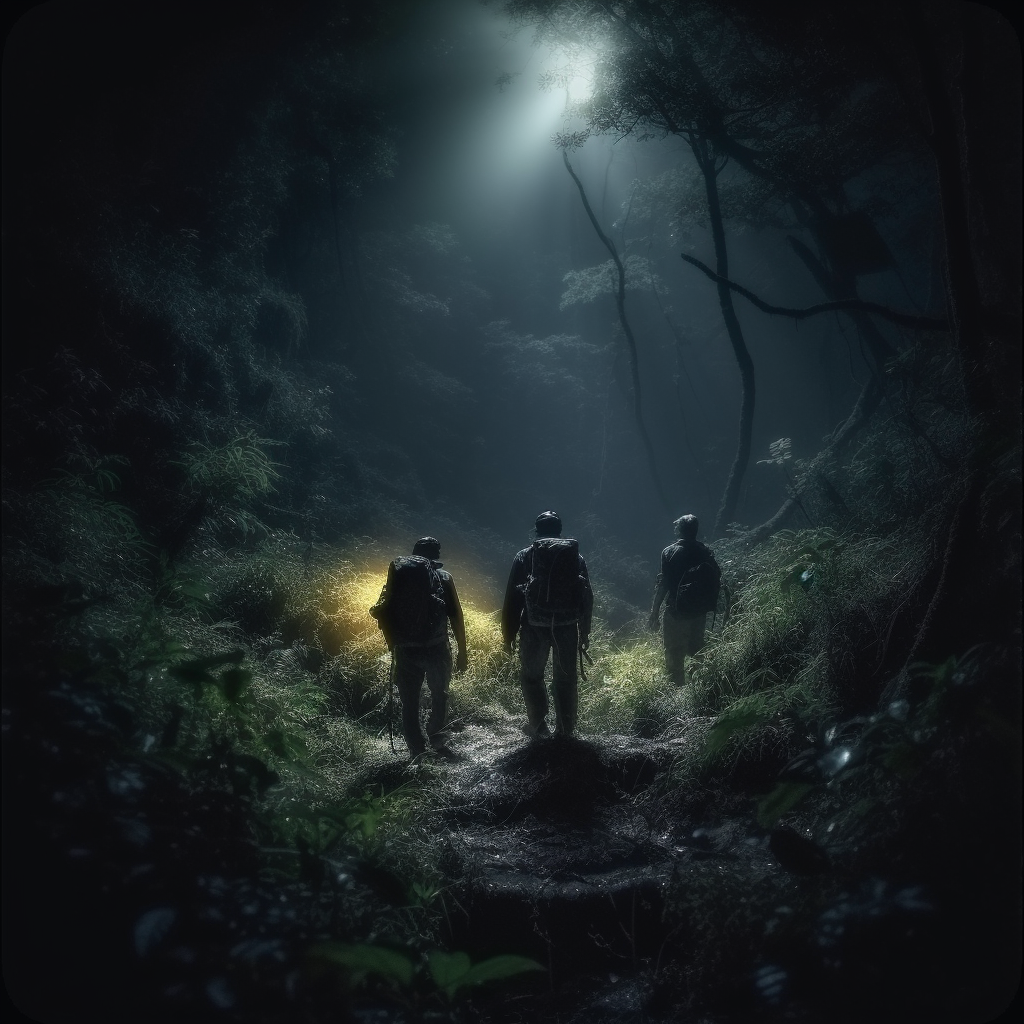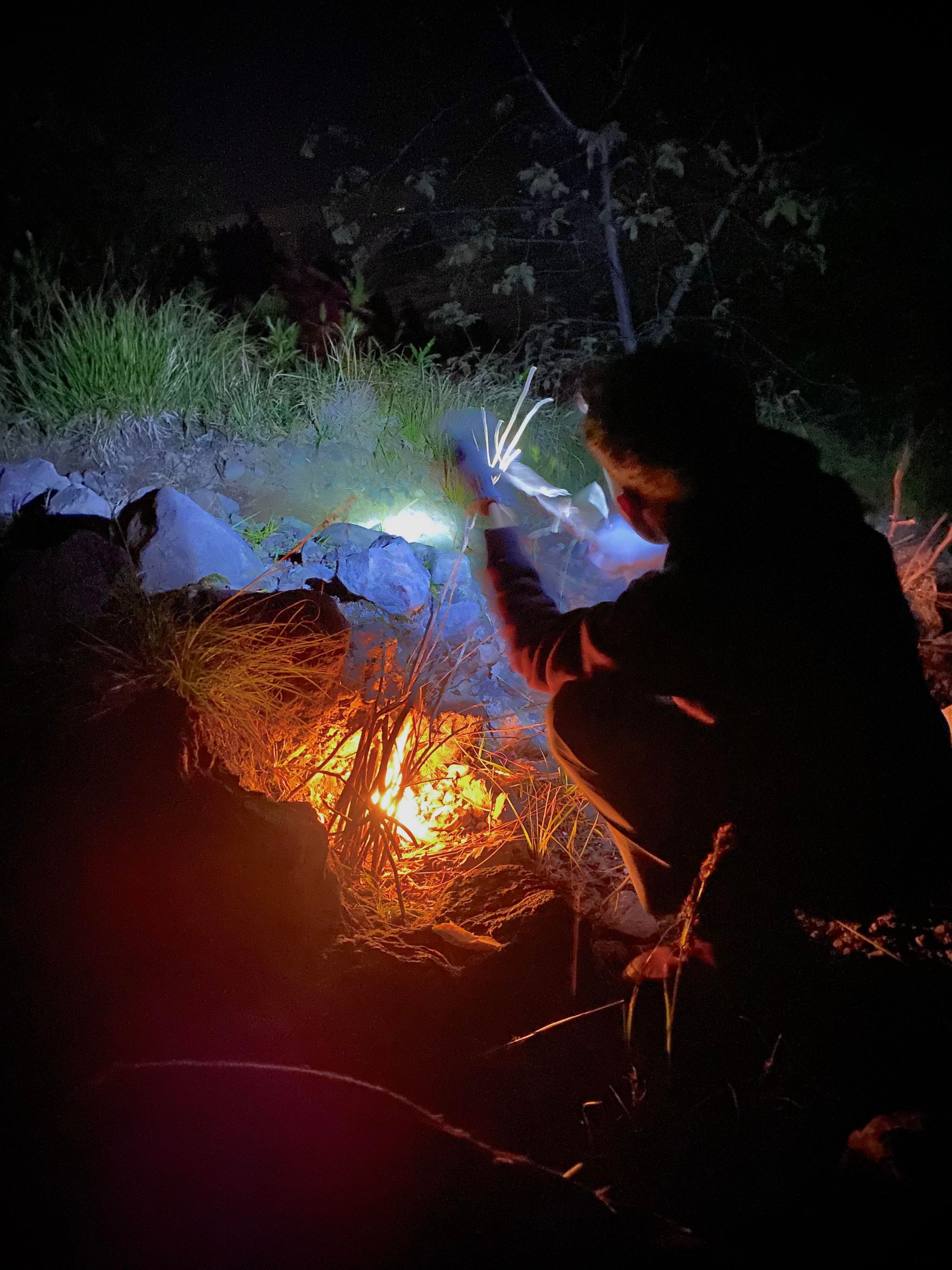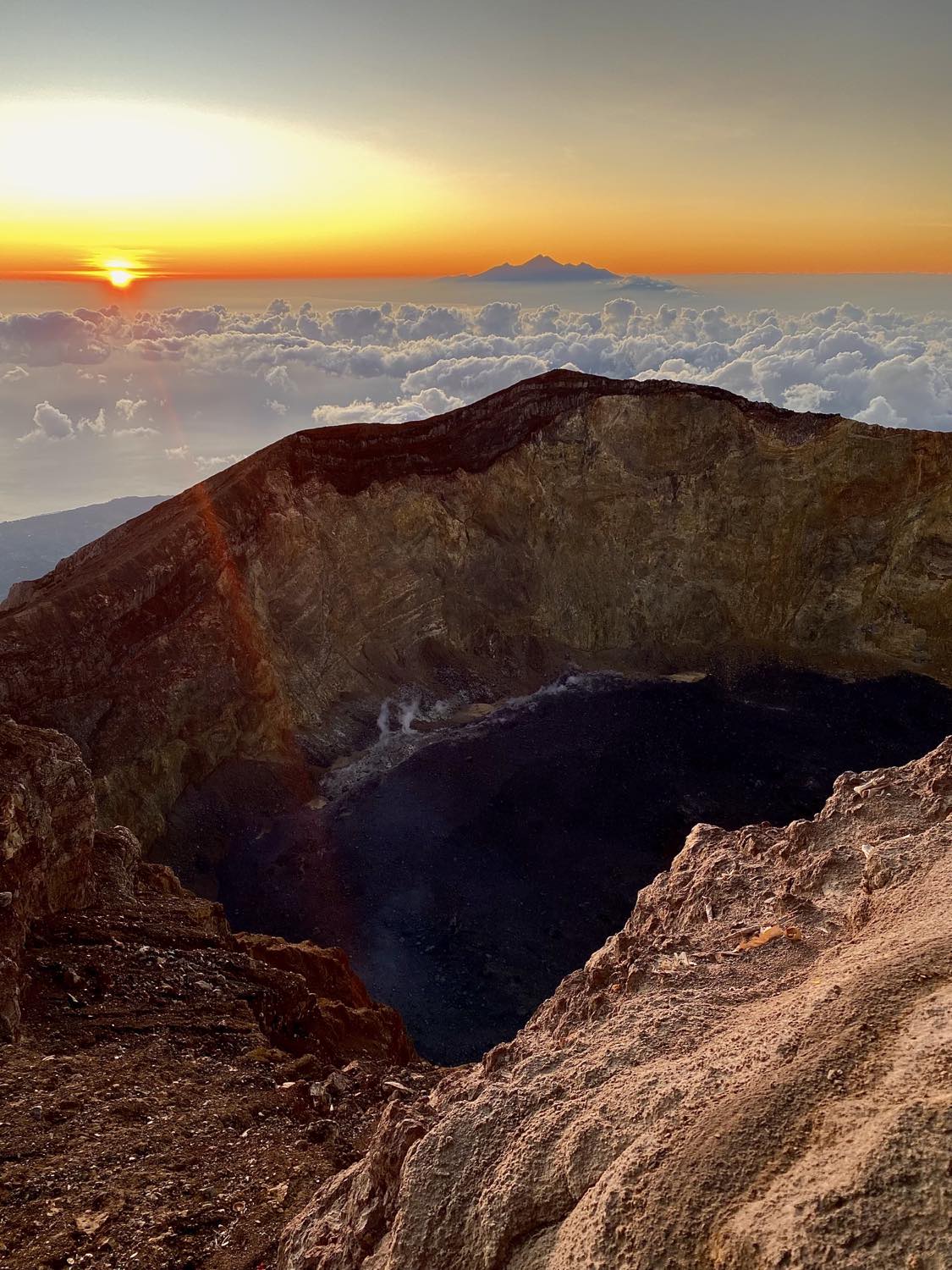The Track Less Tracked

Climbing Bali’s Largest Active Volcano
Everything was darkness, except for the bobbing beams of our headlights. The only sounds were the path crunching underneath us and my already laboured breathing. I looked down at my illuminated watch face, we were only 20 minutes into an 11-hour trek.
Gnarled roots were our stepping stones. Or our tripwires. I was finding my feet on the jungle trail and out of practice in my rigid, military-style hiking boots. Not for the last time that night, I stumbled clumsily. As I gathered myself, I felt an encouraging clap on the back.
“This will be interesting,” my friend said with a smile as he overtook me.
I met my climbing companion a couple of days earlier, in a hostel dormitory in the beach side town of Sanur. He was broad-shouldered and broad-smiled with a Roman nose and angular features. His good looks were tempered by the pink, slightly comical, sun burnt tinge of a holidaying European. He was, in fact, a film student on an extended study break. As he sat on the bunk bed with his great limbs folded in lanky nonchalance, it seemed fitting that this Frenchman was kite-surfing his way through Indonesia. Rigged up the right way, it struck me, he himself seemed aerodynamic.
As we trudged through the jungle, we were led in silence by our Indonesian guide, Made. Having arranged the trek via WhatsApp, I was taken aback by meeting our fearless leader in person. He looked about fourteen years old and was incredibly slight of frame. I was a bit dubious. This kid seemed more prepared to be blown away by a moderate mountain breeze or worse, break out into a spontaneous episode of TikTok-ing, than to lead us to the summit of Bali’s largest (and still active) volcano.
Yet, Made had a determined disposition as he issued the headlamps and trekking poles and powered wordlessly ahead. We ascended the steep steps from the car park to the towering, godly gates that marked the entrance to the mountain. Made instructed us bluntly to wait.
Fragrant incense unfurled into the cool evening as Made kneeled in silent prayer.
According to traditional Balinese beliefs, Mount Agung is the centre of the universe. If you ask a Balinese person which way is north, you might not get a geographically accurate answer. Many will point to the volcano, regardless of which side of it they’re on. It’s the epicentre of their spirituality and the dwelling place of the Gods.
“Ok, now we go.” Made forged ahead. He was a young man of few words, and as he climbed quietly with his hands in the pockets of his hoodie, he took on the solemnity of a boy monk in walking meditation.

We emerged from the dense jungle. The night was still but the mountain wind rushed somewhere in the distance, like an oceanic highway. The path grew ever more vertical as we heaved ourselves up the mountain. We could only see as far as our feet, tentatively toeing for sturdy footholds amidst the scattered rocks.
Mount Agung is a stratovolcano, being made up of layers of ash, lava and tephra accumulated over millions of years. It’s located in the ‘Ring of Fire’ (cue Jonny Cash), a region in the Pacific, home to the world’s most active volcanos. Agung broods dangerously, its 1963 eruption killed an estimated 1100-1500, one of the deadliest in Indonesia’s history. More recently from 2017-19, several eruptions triggered island-wide warnings and changed the face of the crater, crumbling the summit down some 40 metres.
Any discount on the climb was welcome news. But it was surreal to consider the ashy, suffocating oblivion that would meet anyone whose volcano visit was mistimed for the wrong moment of the millennium.
My watch beeped. Nearly two hours into the journey and we had only just covered our first kilometre.
We came to a plateau and sat down on the uneven earth for a welcome rest. Relinquishing our total focus on remaining upright, we turned off our headlamps and beheld the glittering night. A shimmering canopy of stars stretched above us and city lights sprawled beneath, as though it was a sparkling reflection of the heavens in deep, still waters.
“Jean-Paul, could you pass my water bottle?” I asked.
“Who’s Jean-Paul?” My companion smiled back, “It’s Paul-Henry!”
I grimaced apologetically, “Aren’t all French guys name Jean-something?”
We laughed it off as Made made a fire out of gasoline-soaked bark and some gathered tree branches. He then poured coffee into some plastic cups and presented dinner, fried banana and chocolate bars. No better banquet could be imagined. As we tucked in, all doubts about Made’s capabilities evaporated in the flickering flames. He was a boy monk turned survivalist saviour.

We ate gratefully, but I suspected it was a far cry from French dining. When I asked my friend about food from his home, he responded with the most French of possible replies.
“I miss cheese like my ex-girlfriend.”
I laughed heartily. “Well said, Jean-Paul Satre.”
As we resumed our ascent, I habitually restarted my smartwatch.
“Is that for tracking the walk?” asked the cheese-appreciator-in-chief.
“Yeah, so I know how slow we’re going.”
I bought the watch last year when I became more enthusiastic about running. Now it was an indispensable accessory for anything more than a trip to the letterbox. In preparing for a marathon, which I completed at an agonising, glacial pace several months earlier, the watch provided useful feedback on my performance, and perhaps more importantly, helped to carve up the suffering into more manageable morsels. But why bother to measure the miles now? I suspect it had something to do with sharing the walk with my fellow non-athletes online. Which, brings to mind the old philosophical question, ‘If you go for a walk in the woods and don’t post it to social media, did it really happen?’
We were on all fours, scaling up a cliff face in the dark hours of early morning.
The Frenchman kicked out one of his long legs for leverage.
“Nice move, Jean-Claude Van Damme!” I yelled up at him.
As the air became thinner, and the path more technical, our banter ceased. We came across other hikers as dawn drew nearer. A group of Indonesian women chatted merrily in between theatrical groans of exertion. Clearly, they were unburdened by the masculine tradition of suffering silently. The spell of our imagined solitude was broken.
Many travellers seek out journeys ‘off the beaten path’, unspoiled by modernity or the photo-snapping scourge of fellow tourists. In a world of highly crafted personal branding, where we curate, edit and display our experiences as consumable goods, it’s perhaps understandable to seek out more ‘authentic’ experiences of travel.
As I scrambled up the unpredictable volcanic cliffside, I recalled a memory from some 14 years or so before.
I was leaning back restlessly in a plastic chair in a high school classroom. Ms. Lightfoot, our sharp-witted, suffer-no-fools literature teacher presented us with the Robert Frost poem with the over-quoted conclusion:
"Two roads diverged in a wood, and I—
I took the one less travelled by,
And that has made all the difference."
We smelly, pubescent scholars offered the usual interpretation; the virtues of choosing unconventional, difficult paths, to live life on our own terms.
I wasn’t a particularly rebellious youth, as evidenced by my cringe-worthy participation in musical theatre productions and debating teams, but I was unsatisfied by our analysis of Frost’s famous fork-in-the-road.
Earlier in the poem, looking down one path, the narrator;
"Then took the other, as just as fair,
And having perhaps the better claim,
Because it was grassy and wanted wear;
Though as for that the passing there
Had worn them really about the same
He admits that both paths are “really about the same”. Perhaps he is less the master of his destiny than we might think, his choice is somewhat arbitrary. The name of the poem, “The Road Not Taken” offers another clue, maybe the poem is not just about choosing the lesser-worn trail but also an admission that we can’t ever fully know the alternatives we leave behind, no path is the ‘right’ one and our reasons for choosing are questionable at best.

The Frenchman clasped my hand and pulled me over a final barricade of stone.
“Thanks, Jean Valjean,” I muttered.
We reached a frigid, precarious ridge line, joining scores of other climbers. I was thankful to be on a well-worn path.
I’ve had the experience before of an underwhelming summit, where you need to remind yourself about the value of the journey, not the destination. This was not one of those times.
With feet dangling over the cavernous crater’s edge, the purply darkness gave way to the golden glory of sunrise. A neighbouring volcano, Mount Rinjani, rose from the vast ocean in symmetrical spires. The crowd murmured excitedly as the landscape glowed. In that fleeting moment at the edge of eternity, I snapped a few pictures. I couldn’t help myself.

As we retraced our steps down the mountain, the bright morning revealed just how perilous our path had been, the canyons and crevasses we had unknowingly avoided. Our guide, Made, forever unflappable, led us down the winding way. It occurred to me I had hardly heard him exhale through the whole adventure.
I forgot to restart my smartwatch on the treacherous, knee-buckling descent. But it mattered little.
Whether dividing time in volcanic epochs or by the kilometre, tracking wasn’t able to capture the feeling of the track.
Just as my feeble iPhone photos or these words don’t fully capture the beauty of the summit sunrise.
And it occurred to me that there is no path worth taking that is ever truly untrodden.
It was the help of a hyphenated French friend and our stoic Indonesian guide that "made all the difference".
Sign up for my weekly newsletter, Mind Maps, for more on travel, culture and creativity.
